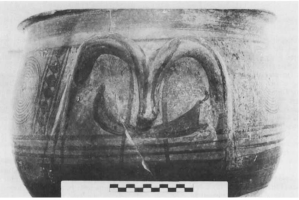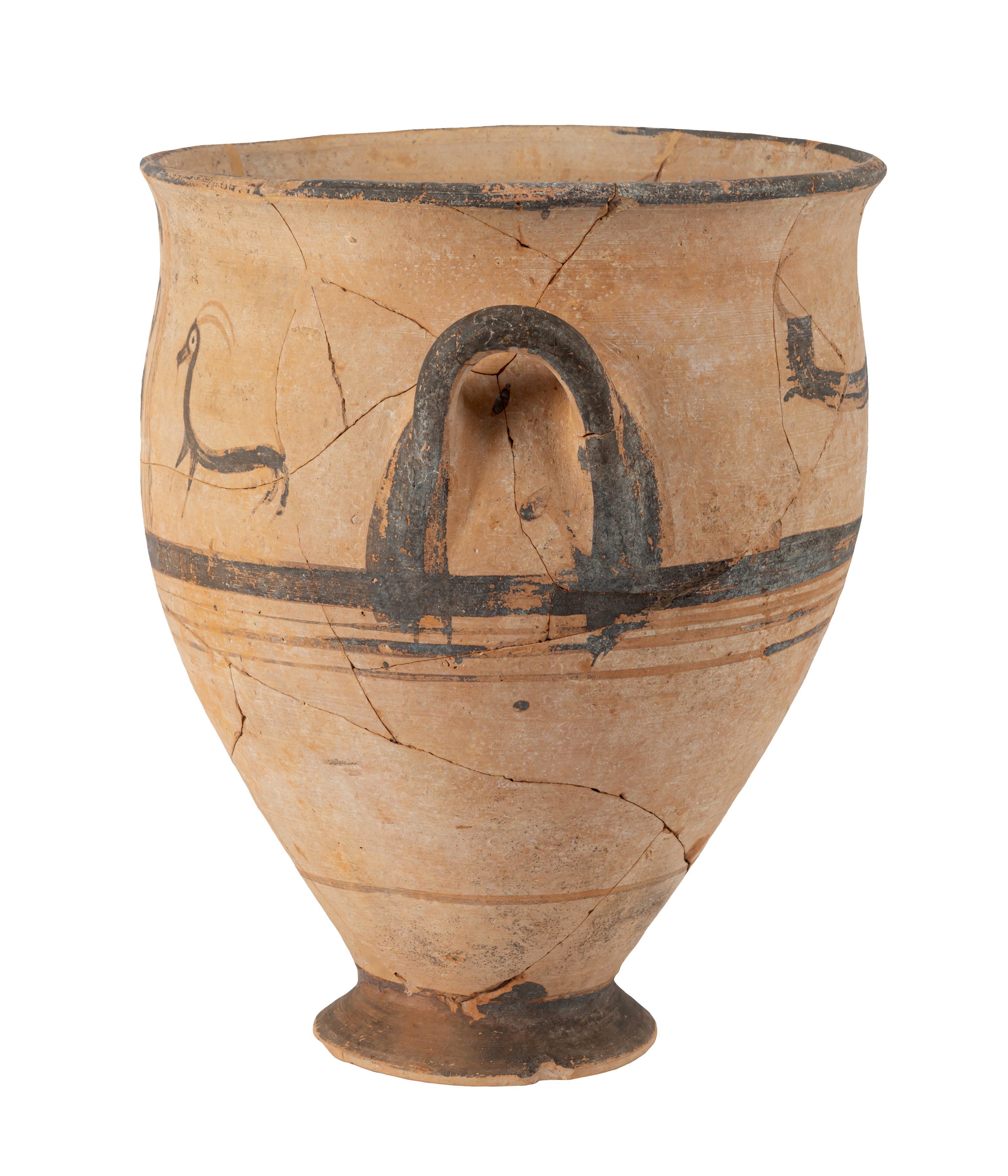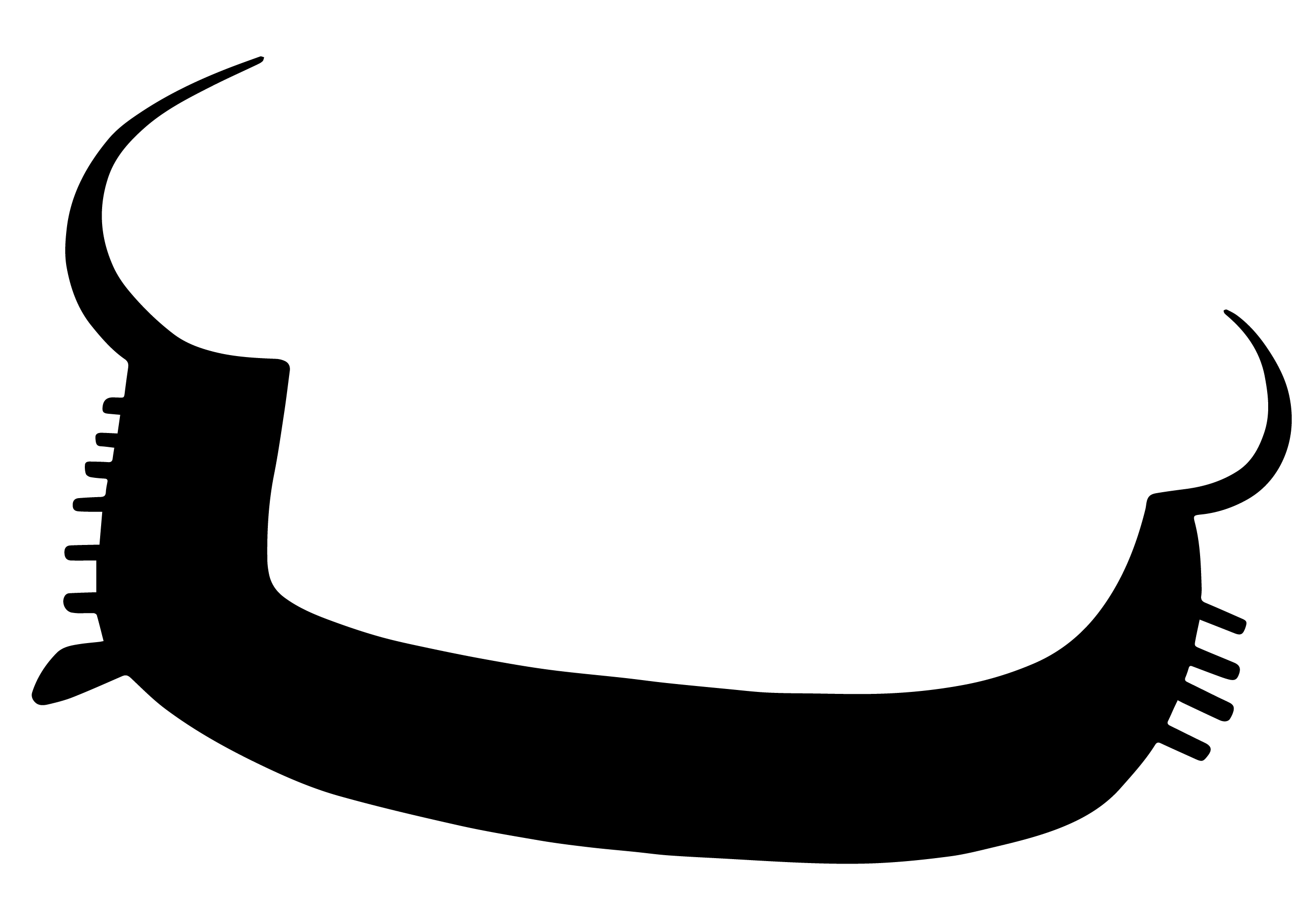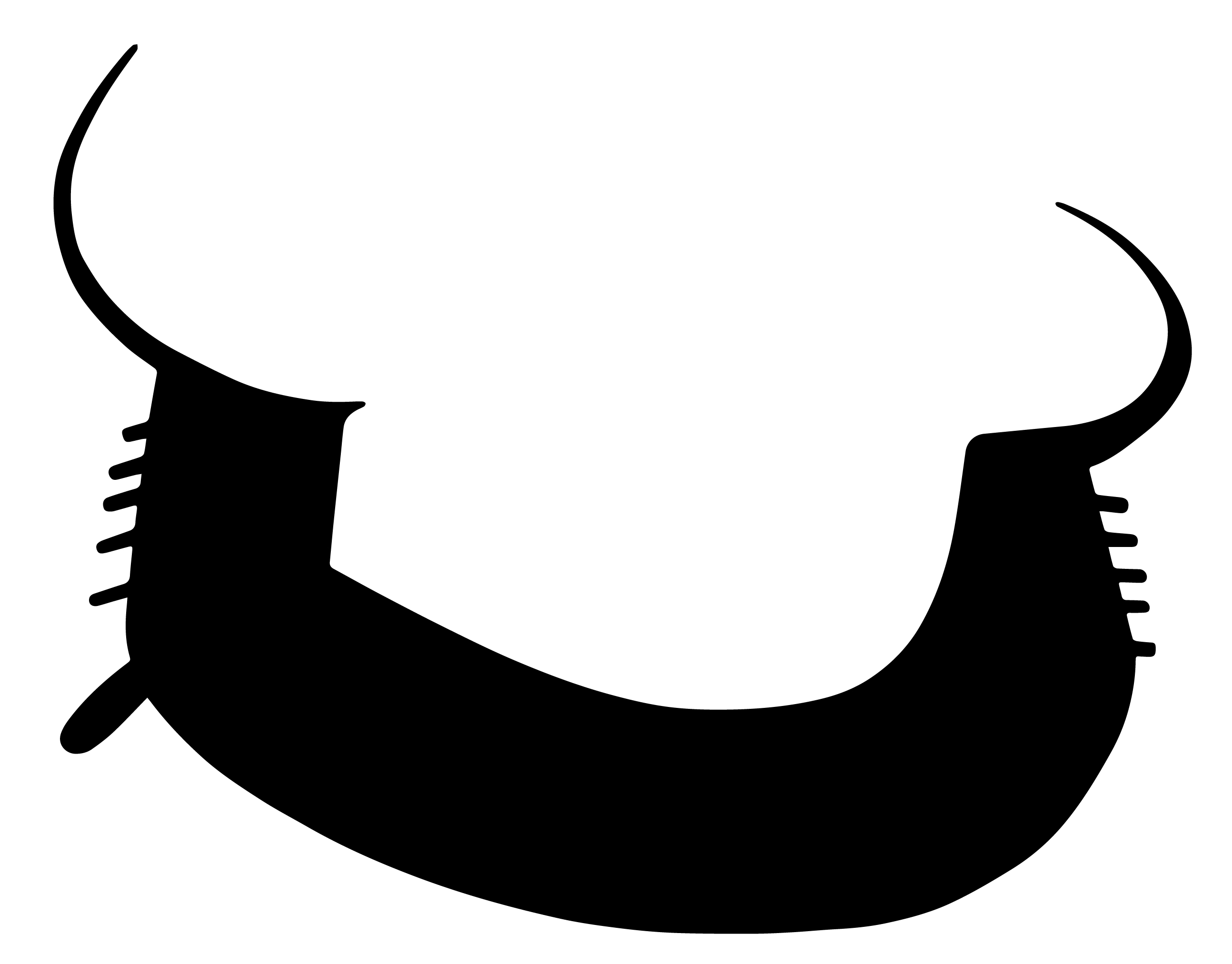Two ships to the left. Although they differ somewhat in their proportions, they were obviously meant to depict the same type of vessel. It is characterized by a low, nearly flat hull, a slender curving stern, and a vertical stempost with a large incurring horn-like terminal. The same device tops the sternpost, except of smaller proportion. There are a series of short strokes protruding from the stem and stern posts. The bow is thick, with a forecastle and an embryonic bow projection that is bent out of line with the keel, with a downward inclination. Wedde assigns it to his group 5, which is defined as a massive square bow with vertical post (Wedde 2006:258).
Two ships
A112
950-900 B.C. (Cretan Protogeometric)
Fortetsa, Tomb VI, Knossos
H: 40.5 cm; diameter (mouth): 32-34 cm
Bell krater, dark-brown to black varnish
Heralkion Archaeological Museum 13054
Basch 1987: 159, fig. 320; Brock 1957: 11-14 (tomb); Casson 1971: fig. 60; Van Doorninck 1982: 281-83; Güntner 2006: fig. 7; Kirk 1949: 118-19; Mark 2005: 108-110; Morrison and Williams 1968: 12, geom. 1; Nakas 2011: 1003, fig. 1; Pomey 1997: 76; Wedde 2000: 168-69; 2006: 261
Tomb VI to which the krater belongs is notable for its foreign connections. Items include two Late Protogeometric imports from Attica, a duck askos reflecting Cypriot influence (Coldstream 1968: 340), an iron pike, a bronze bowl, gold rings, and a faience ring with a pseudo-hieroglyphic design on the bezel. The latter was found inside the krater itself, along with other small objects such as clay beads.
Krater: A Protogeometric bell krater with handle zones on either side subdivided into two panels: a pair of goats facing inwards separated by a central triglyph of complex design on one side, and a pair of ships to the left separated by a plainer triglyph on the other. The vessel likely served as a cinerary urn.
The scholarship on these ships is punctuated by disagreement regarding which end should be interpreted as the bow, which then has implications concerning the nature of the ship (galley or merchantman). Kirk, Basch, and Casson think the protrusion on the left end of each vessel is the blade of a quarter rudder, while Williams, Doorninck, and Wedde interpret the left as the bow and the protrusion as a forefoot. The weakness of the former interpretation is that it is heavily based on the dichotomy between round merchant ships and galleys, an artificial construct that finds no support in the evidence. The tubby impression is only given by the ship on the right, while the left one clearly shows a much flatter and lower hull. Both the preceding LH IIIC depictions and the subsequent geometric ones all depict galleys, which makes such a lone and radical departure highly unlikely. The biggest indication of the bow is the forecastle and the fact that this end is a lot thicker and sturdier, a necessary progression towards the emergence of the ram. The left ship, which is the more reflective depiction, is particularly close in profile to the Oropos model. The downward inclination of the bow projection is unusual but not without precedent. Doorninck observes that "the vase-painter in these instances may simply have attempted to produce with a single brush stroke the general appearance of a relatively short, rounded forefoot. Since the upper face of the forefoot would have a prominent downward inclination and the under side would be either horizontal or perhaps even very slightly down-curving, the forefoot in profile would appear to have a definite down ward inclination."(Doorninck 1982:282-83). The horn like terminal and the short plank protrusions of the stempost echo the LG I Dipylon ships.
Basch, L. 1987. Le musée imaginaire de la marine antique. Athens: Institut Hellénique pour la preservation de la tradition nautique.
Brock, J. K. 1957. Fortetsa. Early Greek Tombs near Knossos. Cambridge: Cambridge University Press.
Casson, L. 1971. Ships and Seamanship in the Ancient World. Princeton: Princeton University Press.
Güntner, W. 2006. “Same Motif, Another Context,” in E. Rystedt and B. Wells (ed.) Pictorial Pursuits: Eigurative Painting on Mycenaean and Geometric Pottery. Paper from Two International Round-Table Conferences on Mycenaean and Geometric Pottery at the Swedish Institute at Athens in 1999 and 2000. Stockholm: Svenska Instituted I Athen, pp. 177–182.
Kirk, G.S. 1949. “Ships on Geometric Vases.” BSA 44: 93-153, pls. 38-40.
Mark, S. 2005. Homeric Seafaring. College Station, TX: Texas A&M University Press.
Morrison, J.S. and R.T. Williams. 1968. Greek Oared Ships: 900-322 B.C. Cambridge: Cambridge University Press.
Nakas. Y. 2011. “Νήαι μέλαιναι: Πλοία και ναυπηγική στο Αιγαίο της Πρώιμης Εποχής του Σιδήρου (Νήαι μέλαιναι: ships and shipbuilding in the Early Iron Age Aegean).” In A. Mazarakis Ainian, (ed.) The "Dark Ages" revisited: acts of an international symposium in memory of William D.E. Coulson, University of Thessaly, Volos, 14-17 June 2007. Volos: University of Thessaly Press: 1003-1017.
Pomey, P. 1997. La navigation dans l’Antiquité. Aix-en-Provence.
Van Doorninck, F. H. 1982. “Protogeometric Longships and the Introduction of the Ram,” IJNA 11.4: 277–286.
Wedde, M. 2000. Towards a Hermeneutics of Aegean Bronze Age Ship Imagery. Peleus Studien zur Archäologie und Geschichte Griechenlands und Zyperns, vol. 6. Bibliopolis: Mannheim and Möhnsee.
―――. 2006. “Pictorial Evidence for Partial System Survival in the Greek Bronze Age to Iron Age Transition,” in E. Rystedt and B. Wells (eds.) Pictorial Pursuits: Eigurative Painting on Mycenaean and Geometric Pottery. Paper from Two International Round-Table Conferences on Mycenaean and Geometric Pottery at the Swedish Institute at Athens in 1999 and 2001, Stockholm: Svenska Instituted I Athen, pp. 255-269.







